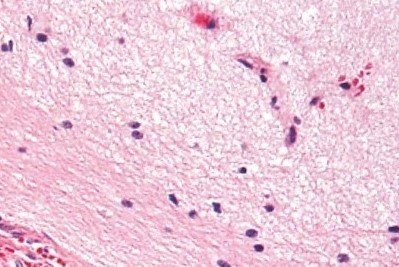General Definitions and Explanations
A cancer diagnosis can feel isolating for all involved, which is why Gray for Glioblastoma is here to help you navigate through the unknown. Below are definitions and explanations to help assist you in your journey.
Tumor Location
The location of a glioblastoma brain tumor can affect what symptoms manifest as well as which treatment options will be the most affective. The presence of a brain tumor can cause damage to healthy brain tissue, disrupting the normal functions of that area.
-
When the location of the brain tumor is the Frontal lobe it may cause difficulty with:
Concentrating or focusing attention, speaking, communication skills and language production, controlling emotions and behavior, executive functions such as making decisions, solving problems, planning and organizing, learning and remembering new information, lack of inhibition, social , impulse control and sexual behavior, weakness on the opposite side of the body from the tumor, loss of smell.
-
When the location of the brain tumor is the parietal lobe it may cause difficulty with:
bringing together information from your different senses (touch, vision, hearing, smell, taste) and making sense of it, recognizing faces or objects, co-ordinating movements, spatial awareness (judging distances and hand-eye co-ordination), speaking, understanding words, writing, reading, numbness on the opposite side of the body from the tumor.
-
When the location of the brain tumor is the temporal lobe it may cause:
Difficulty hearing, speaking, identifying and categorizing objects, learning new information, correctly identifying emotions in others, memory loss, seizures or blackouts, sensations of strange smells.
-
When the location of the brain tumor is the occipital lobe it may cause:
difficulty with vision such as identifying objects or colors, loss of vision on one side.
-
When the location of the brain tumor is the cerebellum it may cause:
Difficulty with balance, a loss of co-ordination, difficulty walking or speaking, difficulty using executive functions (making decisions, solving problems, planning and organizing) flickering of the eyes, vomiting, stiff neck, problems with dexterity (skills in using your hands).
-
When the location of the brain tumor is the Brain Stem/Spinal Cord it may cause:
Unsteadiness, difficulty walking, facial weakness, double vision, difficulty speaking and swallowing.
What is a Malignant Tumor?
A term used to describe cancer cells meaning the tumor is cancerous and is likely to metastasize (spread) beyond its origin. Malignant cells grow in an uncontrolled way and can invade nearby tissues and spread to other parts of the body through the blood and lymph system (Cancer.gov).
What is a cancer grade? What does grade IV mean?
Cancer cells are typically divided into 4 grades (using Roman numerals I to IV), based largely on how the tumor cells look under a microscope. Lower grade (grade I or II) tumors tend to grow slower and are less likely to grow into (invade or infiltrate) other areas. Higher grade (grade III or IV) tumors tend to grow quickly and are more likely to invade nearby tissues. These tumors often require more intense treatment methods. The higher the grade, the more aggressive the cancer (Cancer.gov). However, glioblastomas are always classified as grade 4 brain cancer.
“Normal brain cells”
“Glioblastoma brain cells”
What is an Astrocytoma?
Astrocytomas are tumors that arise from astrocytes—star-shaped glial cells that make up the “glue-like” or supportive tissue of the brain (ABTA).
What is a Craniotomy?
A type of procedure performed on the brain while you are awake and alert. During the procedure, doctors place your head in a fixed position to keep your head still and ensure surgical accuracy. Some of your hair may be clipped to do this. An anesthesiologist will give you some medication to make you sleepy for parts of your awake brain surgery. Your neurosurgeon will apply numbing medications to your scalp to ensure your comfort. During surgery, a team of speech-language pathologist may ask you questions or ask you to identify pictures or words on cards, make movements, count numbers or raise a finger. Your responses help your surgeon identify and avoid damage to the functional areas in your brain (Mayo Clinic).
What are some common medications?
Steroids: Dexamethasone is the drug of choice to relieve symptoms due to the brain swelling that is often associated to the tumor. It is a very effective drug, which acts quickly and reliably. Unfortunately, it does not have any action against the tumor, and it is associated to significant side effects when used for periods longer than 2-3 weeks: weight gain, high blood sugars, hypertension, increased risk of infection, irritability.
Chemotherapy with TMZ: Temozolomide (TMZ) is a drug which is taken by mouth and works by slightly modifying the DNA of tumor cells. This effect on the DNA triggers its breakage and consequent death of the cell, unless DNA repair mechanisms override the damage. It is usually taken daily for 5 days, followed by a rest period of 3 weeks, before starting another cycle.
Radiotherapy: Radiation works by damaging DNA of the tumor cells. Under standard protocols, the treatment consists of small doses of radiation in the area of the tumor, 5 days a week for 6 weeks. Side effects are local hair loss (usually temporary), and fatigue. Long term side effects are necrosis of the brain around the treated region, and cognitive difficulties.
Bevacizumab (Avastin): Bevacizumab is a drug that blocks the tumor’s ability to recruit blood vessels so that they can feed themselves and keep growing. Avastin has been approved by the Food and Drug Administration (FDA) in 2013 for its use in recurrent glioblastomas. It is very effective in reducing the swelling associated with the tumor and often helps improving symptoms. Unfortunately, it does not significantly prolong survival.
Antiseizure Drugs: Levetiracetam (Keppra) is the most widely used drug for this purpose. It is usually reserved only for patients that have experienced tremors or seizures.
Via Mayoclinic.org
Our Brain Bank Bill of Rights
The Glioblastoma Bill of Rights was crafted by Our Brain Bank for glioblastoma patients and caretakers.
Brain Tumor Guide for the Newly Diagnosed
Reviewed by Dr. Henry Friedman at Duke University and Linda Liau at UCLA
Questions to ask your care team:
Via Cancer. net





